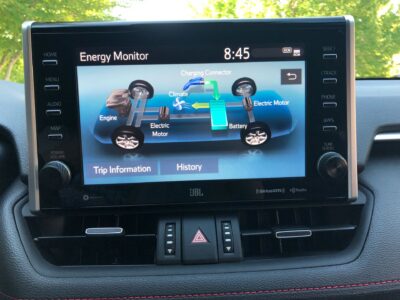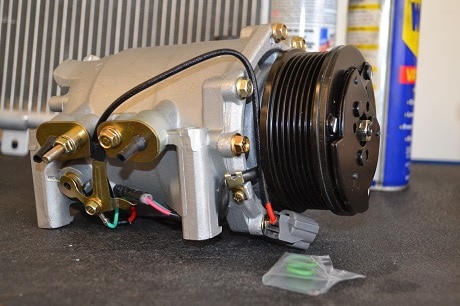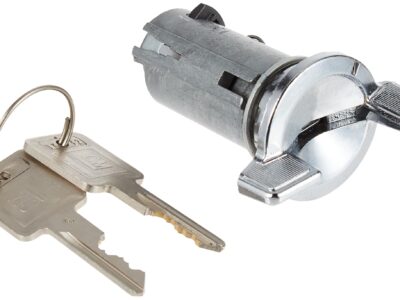
Toyota RAV4 AC Not Working: Definitive Troubleshooting & Repair Guide (All Model Years)

If your Toyota RAV4’s air conditioning has stopped blowing cold air—or only cools sometimes—use this step-by-step guide to diagnose the fault quickly, estimate costs accurately, and decide what you can fix yourself versus what needs a professional.
- Key Symptoms and What They Usually Mean
- First Things First: Quick Wins (10–20 Minutes)
- RAV4 AC: How It Fails by Generation
- Step-By-Step Diagnosis (From Easiest to Advanced)
- Cost Guide (Typical RAV4 Ranges)
- What You Can Safely DIY vs. What to Leave to Pros
- Prevent AC Problems Before They Get Expensive
- Model-Year Pointers You’ll Actually Use
- Professional Service Checklist (Hand This to the Shop)
- FAQs
- Bottom Line
Key Symptoms and What They Usually Mean
| Symptom | Most Likely Causes | Fast Checks You Can Do |
|---|---|---|
| No cold air at all | Low refrigerant (leak), compressor/clutch fault, blown fuse/relay | Listen for compressor click, inspect AC fuses/relays, check sight glass (if equipped) |
| Cold air at start, then warms | Icing from low refrigerant, overcharge, failing evaporator temp sensor | Measure vent temp drop, inspect for frost on lines, scan for HVAC codes if available |
| Fan works only on some speeds | Blower motor resistor (2013–2018 especially) | Test all fan speeds; if “HIGH” only works, suspect resistor |
| Uneven cooling (driver vs passenger) | Blend door actuator stuck, low refrigerant | Change temps and listen for clicking behind dash; check refrigerant state |
| Weak airflow | Clogged cabin filter, blocked condenser, failing blower | Inspect/replace cabin filter, wash condenser fins, listen for blower noise |
| Intermittent cooling on hot days | Marginal refrigerant charge, weak clutch coil, high-side pressure issue | Observe clutch cycling; check condenser cleanliness; monitor with gauges |
Target vent temperature: 15–20°F (8–11°C) colder than outside air at idle, doors open, MAX A/C, recirc on. A smaller drop indicates a system issue.
First Things First: Quick Wins (10–20 Minutes)
- Check AC fuses/relays
- Engine bay + cabin fuse panels. Replace any blown fuses; swap identical relays to test.
- Replace the cabin air filter
- Due every 15,000–30,000 miles (more often in dusty conditions). A clogged filter mimics a weak AC.
- Clean the condenser
- Spray from the engine side outward to remove bugs/road grime. Bent fins? Straighten gently with a fin comb.
- Confirm compressor engagement
- Start engine, A/C ON (MAX/recirc). You should hear/see the compressor clutch engage. No click = electrical or clutch issue; rapid clicking = low charge or pressure problem.
RAV4 AC: How It Fails by Generation
2019–2025 (XA50)
- Refrigerant: Predominantly R-1234yf (different couplers/oil than R-134a).
- Patterns: Electronic climate control sensitivities, occasional sensor/software-related irregularities.
- Notes: Efficiency/eco modes can soften initial blast; confirm settings (MAX/recirc) before deeper diagnosis.
2013–2018 (XA40)
- Common fault: Blower motor resistor causing limited fan speeds.
- Leaks: Discharge hose ferrule/crimp seepage is not unusual as mileage climbs.
2006–2012 (XA30)
- Refrigerant: R-134a; simpler systems, generally cheaper to repair.
- Age-related: O-ring shrinkage, condenser corrosion, blower wear.
Always match your refrigerant type (R-1234yf vs R-134a), oil specification (PAG/POE variant), and service port fittings to your model year. Using the wrong fluid or tools can damage the system.
Step-By-Step Diagnosis (From Easiest to Advanced)
1) Electrical Basics (DIY-friendly)
- Fuses/Relays: Replace cheap parts first.
- Blower Test: Try all speed positions.
- Works only on “HIGH”? Replace blower resistor (10–30 min, glovebox area on most years).
- Clutch Command: With AC ON, does the clutch engage?
- No engagement: Check AC relay, pressure switch connectors, and clutch coil power/ground.
- Engages then drops: Suspect low refrigerant or high-pressure/overheat condition (dirty condenser, fan inoperative).
2) Airflow & Heat Exchange
- Cabin Filter: Replace if dark or collapsed.
- Condenser: Clean fins; confirm radiator/condensor fans run with AC ON.
- Vent Temperature Test: Use a probe thermometer at center vent. Record ambient vs vent (goal: 15–20°F drop).
3) Refrigerant State (Intermediate)
- Visual clues: Frost on low-side line = likely undercharge or airflow issue; oily dirt at hoses/fittings = leak point.
- Manifold Gauges (recommended):
- Undercharged: Low low-side & low high-side.
- Overcharged/air in system: High both sides; poor cooling.
- Restricted expansion valve: Very low low-side, normal/high high-side; line temp differential is stark.
If you add refrigerant and cooling returns briefly, you have a leak. Stop topping off and locate/repair the leak to avoid compressor damage.
You may be interested in readingToyota Corolla AE86 Engine Swap – The Ultimate Guide
4) Controls & Actuators (Advanced DIY/Pro)
- Blend/Mix Door Actuators: Clicking behind the dash or stuck temperature on one side = actuator issue.
- Sensors/Modules: Evaporator temp sensor, pressure sensor, ambient sensor, and HVAC control module can all induce erratic operation. A scan tool that reads Body/HVAC data simplifies this stage.
5) Compressor & Clutch
- Clutch Gap/Coil: Excessive gap prevents engagement hot; shim or replace as needed.
- Internal Failure: Metal debris, noisy operation, or seized unit requires compressor + receiver/drier + orifice/expansion valve + thorough flush.
Cost Guide (Typical RAV4 Ranges)
| Job | Parts + Labor (USD) | Notes |
|---|---|---|
| Cabin air filter | $25–$50 | Immediate airflow improvement |
| Fuse/relay | $10–$40 | Quick, easy |
| Blower resistor | $70–$180 | Common on 2013–2018 |
| Refrigerant recharge (no leak) | $150–$300 | R-1234yf often costs more than R-134a |
| Leak detection & seal/O-ring | $150–$450 | Dye + fix at the leak point |
| Discharge hose replacement | $150–$350 | Frequent leak location |
| Blower motor | $250–$400 | Noise/weak airflow issues |
| Compressor clutch repair | $300–$600 | If clutch/coil only |
| Compressor replacement (complete) | $1,200–$2,000 | Includes evac/recharge; replace related components |
| HVAC actuator | $180–$450 | Uneven temps/clicking in dash |
| Control module diagnosis/repair | $100–$500 | Varies by year and fault |
Dealers typically bill $120–$180/hr; independents $80–$120/hr. Get two quotes for big jobs.
What You Can Safely DIY vs. What to Leave to Pros
| Task | DIY? | Why |
|---|---|---|
| Cabin filter replacement | ✅ | Simple access, instant payoff |
| Fuse/relay checks | ✅ | Low risk, quick to test |
| Condenser cleaning | ✅ | Gentle water pressure; avoid fin damage |
| Blower resistor (most years) | ✅ | Basic hand tools |
| Basic vent-temp testing | ✅ | Cheap thermometer |
| Refrigerant recharge | ⚠️ | Only if you know the correct refrigerant (R-1234yf vs R-134a) and use gauges; avoid overcharge |
| Leak detection/repair | ❌/⚠️ | UV dye and recovery equipment recommended; legal/environmental rules apply |
| Compressor, evaporator, expansion valve | ❌ | System open, contamination risk, calibration/evac tools needed |
Prevent AC Problems Before They Get Expensive
- Run the AC for 10 minutes monthly, even in winter—keeps seals lubricated.
- Replace the cabin filter on schedule; sooner if airflow drops.
- Rinse the condenser annually to maintain heat rejection.
- Annual inspection: refrigerant performance check, fan operation, visual leak scan. A $50–$100 checkup can prevent $1,000+ failures.
Model-Year Pointers You’ll Actually Use
- R-1234yf (2019–2025): Costlier refrigerant; service ports differ from R-134a. Don’t mix oils or fittings.
- Fan Logic: On hot days, both electric fans should run with AC ON. If not, suspect fan relays, fan modules, or the fan motors.
- Intermittent on Bumps: Wiggle-test blower and clutch connectors; harnesses at the compressor and resistor are common vibration points.
- One-Side Warm: Prioritize blend door actuator tests before refrigerant work—especially if the vent drop is normal on the cold side.
Professional Service Checklist (Hand This to the Shop)
- Recover & measure refrigerant quantity (compare to under-hood spec label)
- UV dye/electronic leak detection—condense on hose crimps and condenser end-tanks
- Verify condenser fan command and actual RPM
- Check clutch air gap and coil current draw
- Read HVAC module data (evap temp, pressure sensor, blend/recirc positions)
- If replacing compressor: replace receiver/drier, expansion device, flush lines, and calibrate actuators
FAQs
Why does my RAV4 cool sometimes and blow warm other times?
Intermittent cooling usually points to low refrigerant (leak cycling), a weak clutch coil that drops out when hot, or fan/condenser heat-soak. Confirm clutch engagement hot vs cold and clean the condenser.
Is it safe to top off refrigerant myself?
Only if you identify the correct refrigerant and use proper gauges. Overcharge kills cooling and can damage the compressor. If performance fades again after topping off, stop and repair the leak.
Warm on one side, cold on the other—what now?
Test blend door actuators first (listen for clicking when changing temps). If actuators move correctly, check refrigerant charge and evaporator sensor data.
You may be interested in reading Toyota Corolla AE86 Engine Swap – The Ultimate Guide
Toyota Corolla AE86 Engine Swap – The Ultimate Guide Does the Toyota Camry Have CVT Transmission?
Does the Toyota Camry Have CVT Transmission?How much should vent temps drop?
Aim for 15–20°F below ambient at idle, doors open, MAX/recirc. In extreme heat or humidity, expect the lower end of that range at idle; it will improve while driving.
Grinding/seized compressor, metal debris in lines, or a clutch that’s physically destroyed. Replace supporting components and flush the system to protect the new unit.
Bottom Line
Start with electrical checks, airflow, and condenser cleaning, then verify compressor engagement and vent temperature drop. If gauges indicate a charge issue, find and fix leaks before recharging. Reserve actuator/module and compressor work for when the basics are proven good or a professional confirms the failure.
Use this guide to go from “no cold air” to a stable, reliably cold RAV4 AC—without guesswork or unnecessary parts.
You may be interested in reading Toyota Corolla AE86 Engine Swap – The Ultimate Guide
Toyota Corolla AE86 Engine Swap – The Ultimate Guide Does the Toyota Camry Have CVT Transmission?
Does the Toyota Camry Have CVT Transmission? Toyota Camry Trim Levels 2014: A Detailed Guide to Choosing the Best
Toyota Camry Trim Levels 2014: A Detailed Guide to Choosing the BestIf you want to know other articles similar to Toyota RAV4 AC Not Working: Definitive Troubleshooting & Repair Guide (All Model Years) you can visit the category Common Problems.
Deja una respuesta




More content of your interest